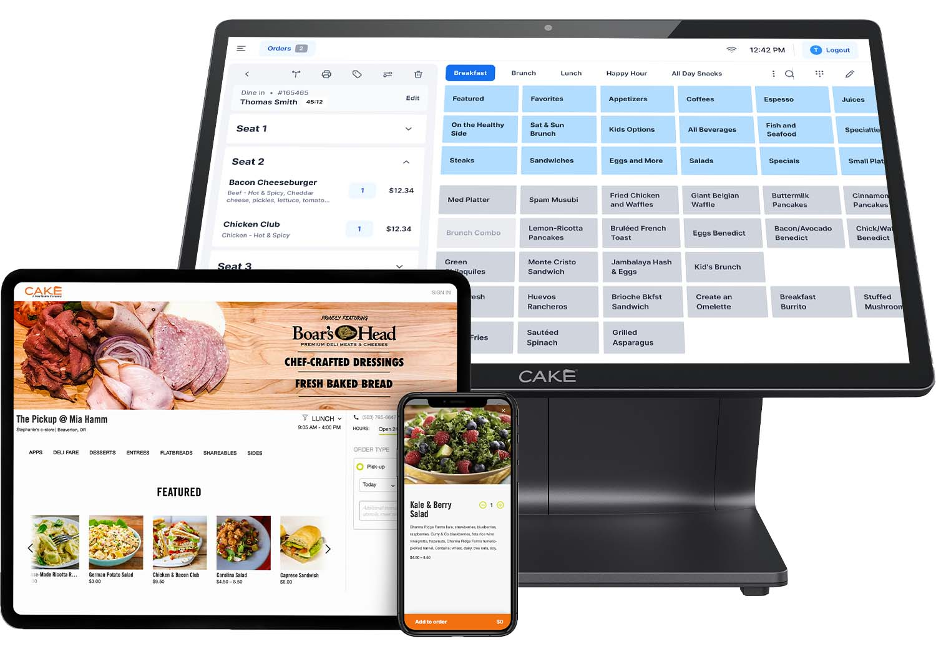Just How POS System Works: A Comprehensive Overview for Entrepreneur

Comprehending the Parts of a POS System

Exactly How Sales Purchases Are Refined
When a customer chooses to purchase, the sales purchase initiates a collection of systematic steps within the POS system. First, the cashier inputs the products being purchased, which are scanned with a barcode visitor or by hand entered. This action gets product details, consisting of rates and appropriate tax obligations, from the system's database.Next, the client exists with the overall quantity due. The POS system then refines the repayment, whether through cash money, charge card, or mobile repayment approaches (Restaurant POS Software). For electronic repayments, the POS firmly interacts with repayment cpus to accredit and verify the transaction.Once the settlement is confirmed, the system generates a receipt, which can be published or sent digitally. This receipt offers as evidence of purchase for the customer. The deal information is recorded in the system, making certain precise sales records and economic monitoring for the company.
Inventory Monitoring and Tracking

Effective supply management and tracking are important elements of a POS system, as they guarantee that services keep optimal supply degrees and decrease discrepancies. A durable POS system enables for real-time stock updates, showing returns and sales instantaneously. This enables entrepreneur to keep an eye on supply levels precisely, making sure that prominent things are easily offered while avoiding overstocking of less popular products.Additionally, advanced POS systems offer functions such as automated stock alerts and reorder pointers, simplifying the purchase process. Barcoding and RFID modern technology improve accuracy in tracking inventory activity, reducing human error. Considerable coverage devices give insights into stock turn over prices, helping businesses make notified choices about buying and product offerings. Inevitably, efficient supply administration with a POS system not only enhances functional efficiency yet likewise boosts client complete satisfaction by making sure product schedule.
Evaluating Consumer Data and Insights
Consumer data analysis functions as an effective tool for companies using a POS system (Restaurant POS Software). By taking a look at and gathering transaction data, companies can discover beneficial insights regarding customer actions and preferences. This analysis allows them to recognize acquiring fads, peak buying times, and prominent products, thereby informing stock choices and advertising and marketing strategies.Additionally, services can section their customer base, enabling for individualized advertising and marketing initiatives that provide to details demographics or buying behaviors. Comprehending consumer loyalty patterns also helps in establishing targeted promos and benefits programs.The information gleaned from a POS system can additionally disclose insights right into customer comments, enabling businesses to make informed decisions regarding item offerings and service renovations. Inevitably, leveraging consumer data efficiently can improve the general purchasing experience, foster customer complete satisfaction, and drive revenue growth
Advantages of Implementing a POS System

Regularly Asked Inquiries
What Sorts Of Organizations Can Take Advantage Of a POS System?
Different organizations gain from a POS system, including retail shops, restaurants, hair salons, and ecommerce systems. These systems simplify transactions, stock monitoring, and customer information, boosting operational effectiveness and improving client experience across varied industries.
How Much Does a POS System Usually Cost?
The expense of a POS system typically ranges from a couple of hundred to several thousand bucks, depending on attributes, equipment, and software program. Organizations must consider recurring fees for upkeep, transaction, and assistance handling when budgeting.
Can I Integrate a POS System With Existing Software Program?
Incorporating a POS system with existing software is typically practical. Several systems use APIs or built-in compatibility features, enabling organizations to enhance operations and enhance performance by linking different software applications properly.
What Training Is Needed for Personnel to Make Use Of a POS System?
Training for personnel to use a POS system commonly consists of understanding software application functionalities, refining transactions, handling inventory, and taking care of customer interactions. Practical presentations and hands-on practice boost effectiveness and confidence being used the system effectively.
What Takes place if the Web Goes Down While Using a POS System?
If the net decreases throughout POS check here system usage, transactions may be interrupted. Lots of systems offer offline capacities, permitting fundamental operations to proceed, however full functionality, including real-time inventory updates, will be restricted. A Factor of Sale (POS) system is composed of numerous key elements that work together to facilitate deals and take care of business procedures. Effective stock management and tracking are necessary elements of a POS system, as they assure that services preserve perfect stock levels and reduce inconsistencies. Consumer information evaluation serves as a powerful tool for companies using a POS system. Recognizing client loyalty patterns likewise aids in creating targeted incentives and promos programs.The data obtained from a POS system can likewise reveal insights into client comments, making it possible for organizations to make enlightened decisions pertaining to item offerings and service improvements. Executing a POS system supplies numerous advantages that can considerably boost organization operations.